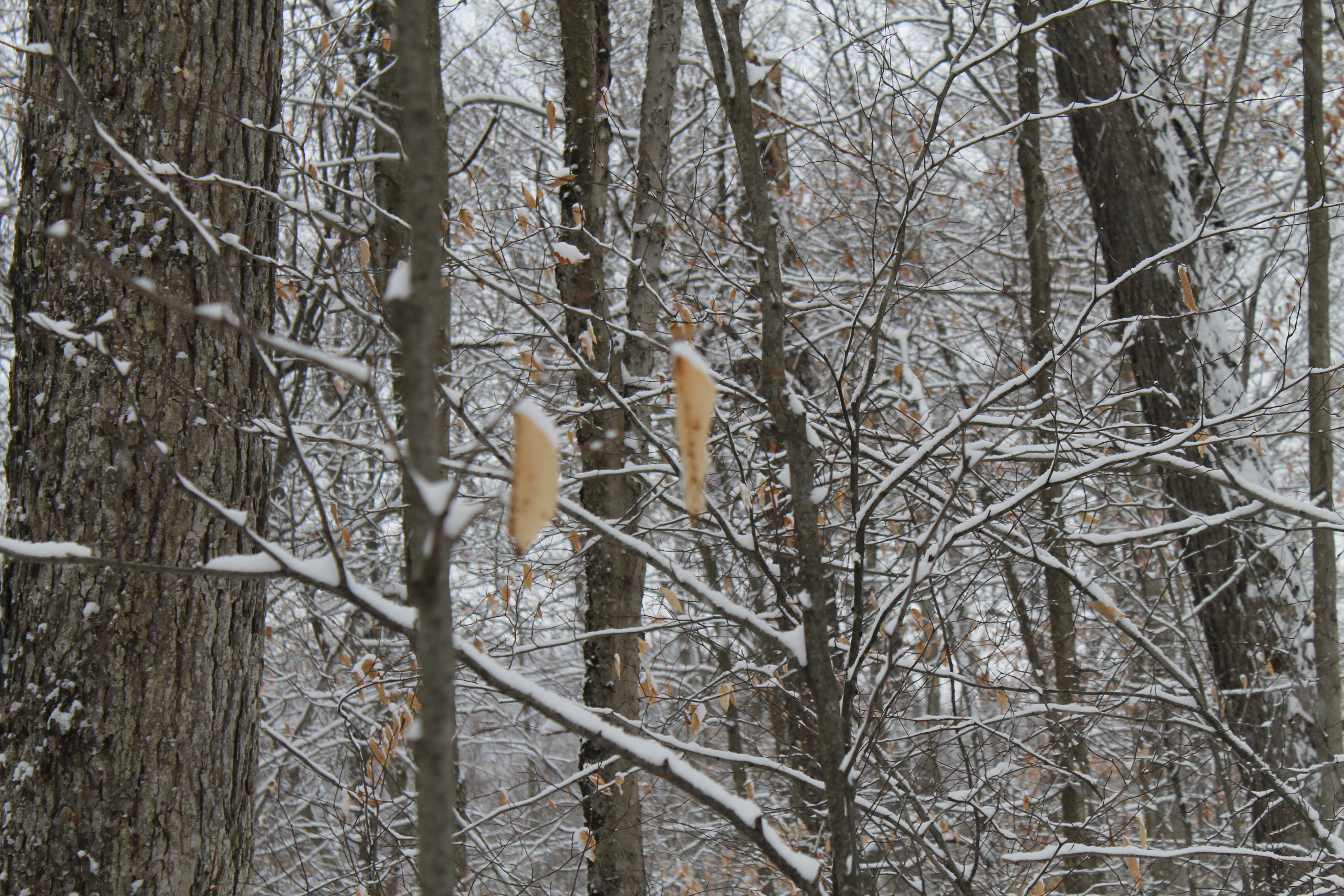
Normally, I'm more of a summer person, but I still like to try to get outside in winter as much as possible. It just takes me a little more to urge myself to do it.
That's why, even though I've always wanted to climb a mountain on snowshoes, I've never gotten around to it. But last week, it was finally time to cross it off my bucket list.
Start off easy
A great place to start if you're new to snowshoeing is The Wild Center. The natural history museum includes the use of snowshoes in the price of admission during winter months.
They have a whole bunch of different sizes so the whole family can give it a try.
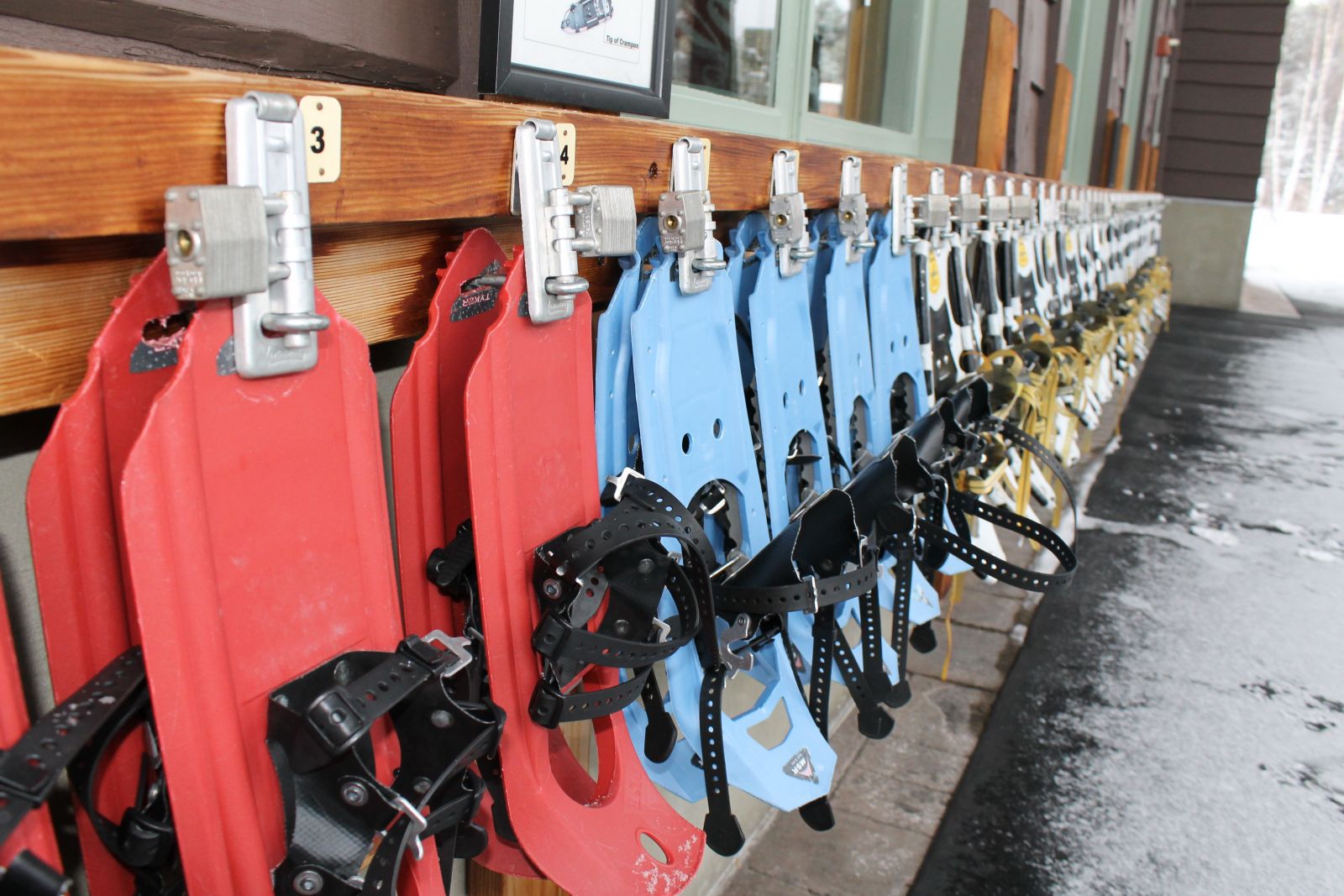
These rigs may look a little complicated, so there's a handy guide to putting them on above the snowshoes:
How to put on snowshoes
1. Loosen all straps.
2. Place snowshoes on snow with the points down so they don’t slide.
3. Look for the “L” or “R” on the bindings for left and right.
4. Slide your shoe under the toe straps.
5. The tip of your shoe should be about an inch behind the tip of the crampons.
6. Tighten toe straps so they are snug, not constricting.
7. Tighten heel straps and repeat directions as necessary.
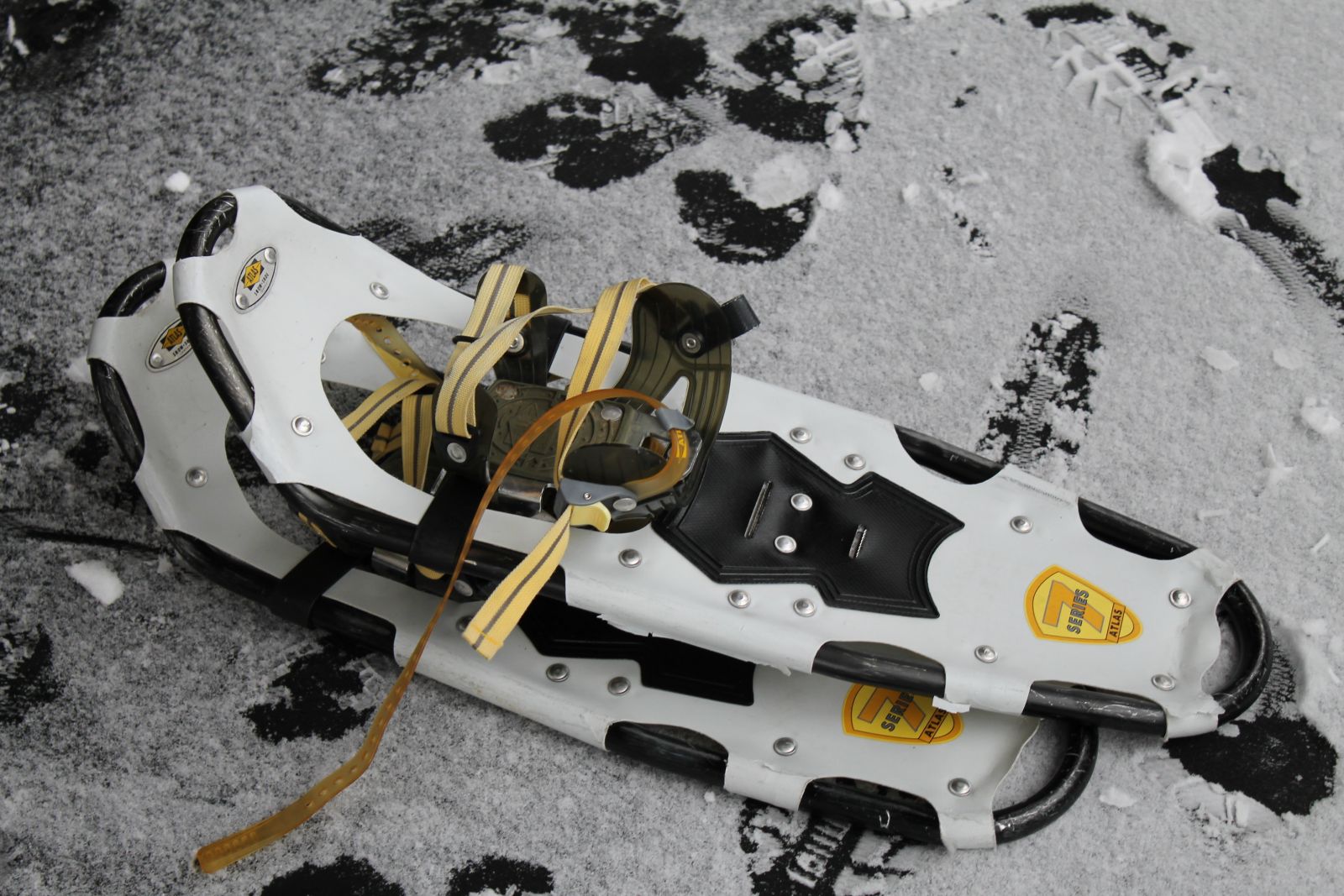
On a normal day at The Wild Center, you can take snowshoes and go out on the well-marked trails on your own, or you can go out on one of the naturalist-led walks — there's usually one or two scheduled each day. When I went, I was lucky enough to catch Leanne for a snowshoe excursion, and she showed me the best way to attach the snowshoes to my feet.
We wandered onto the trail system that stretches from the museum down to the Oxbow on the Raquette River. It's a strange feeling, walking in snowshoes — it kind of feels like your feet are suddenly huge and you could go sledding on them or something. Sometimes snowshoes will keep you on top of the snow, which is really cool and makes you feel like you're floating, and sometimes they'll help you glide under the snow cover.
They definitely take a little more effort than just normal walking, though!
It didn't take long before we came across some small animal prints in the freshly fallen snow. Leanne said they probably came from a bird.
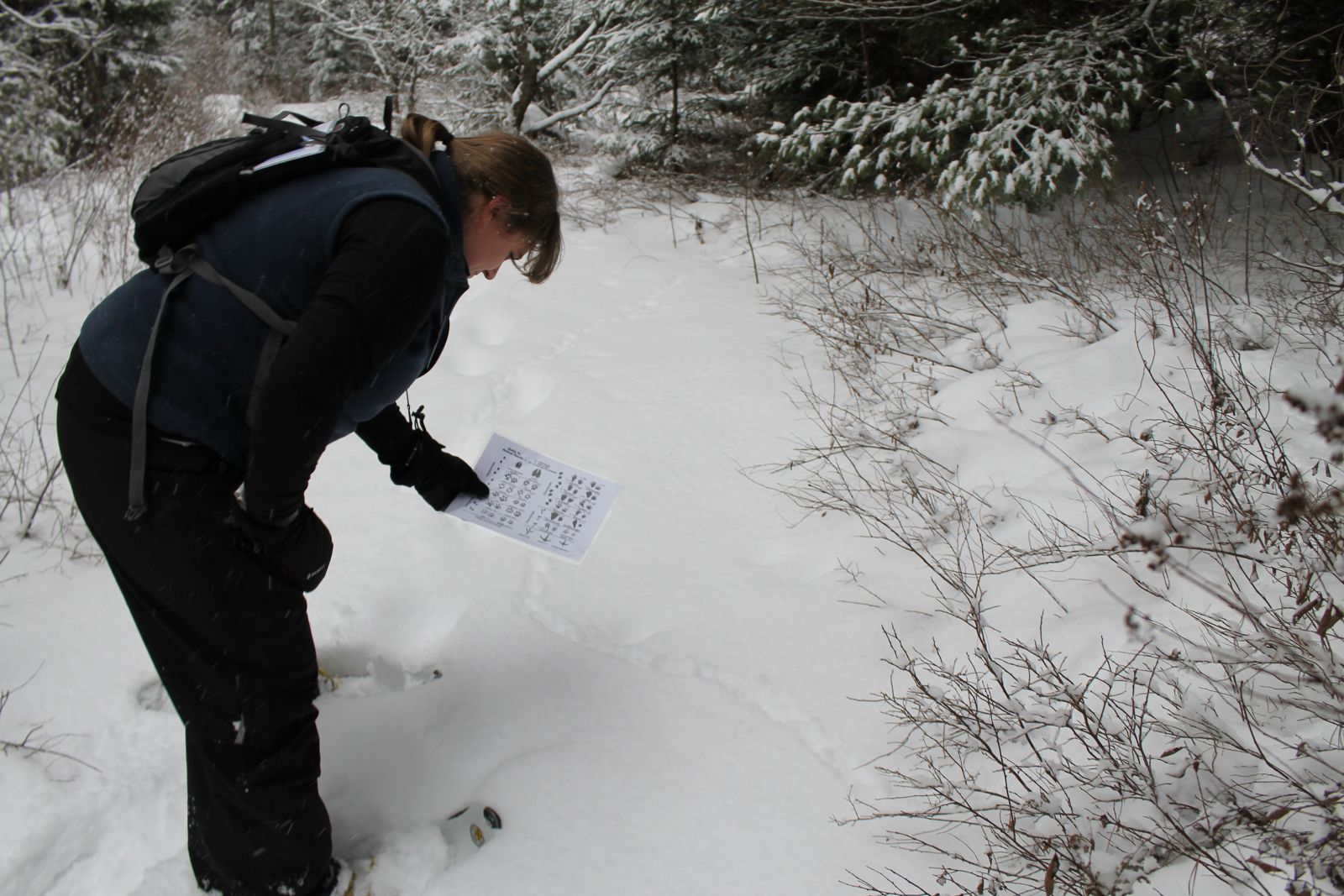
As we followed the tracks farther, they came to an abrupt end that confirmed it was in fact a bird. Leanne pointed out where the bird's wings brushed the snow as the little guy took flight.
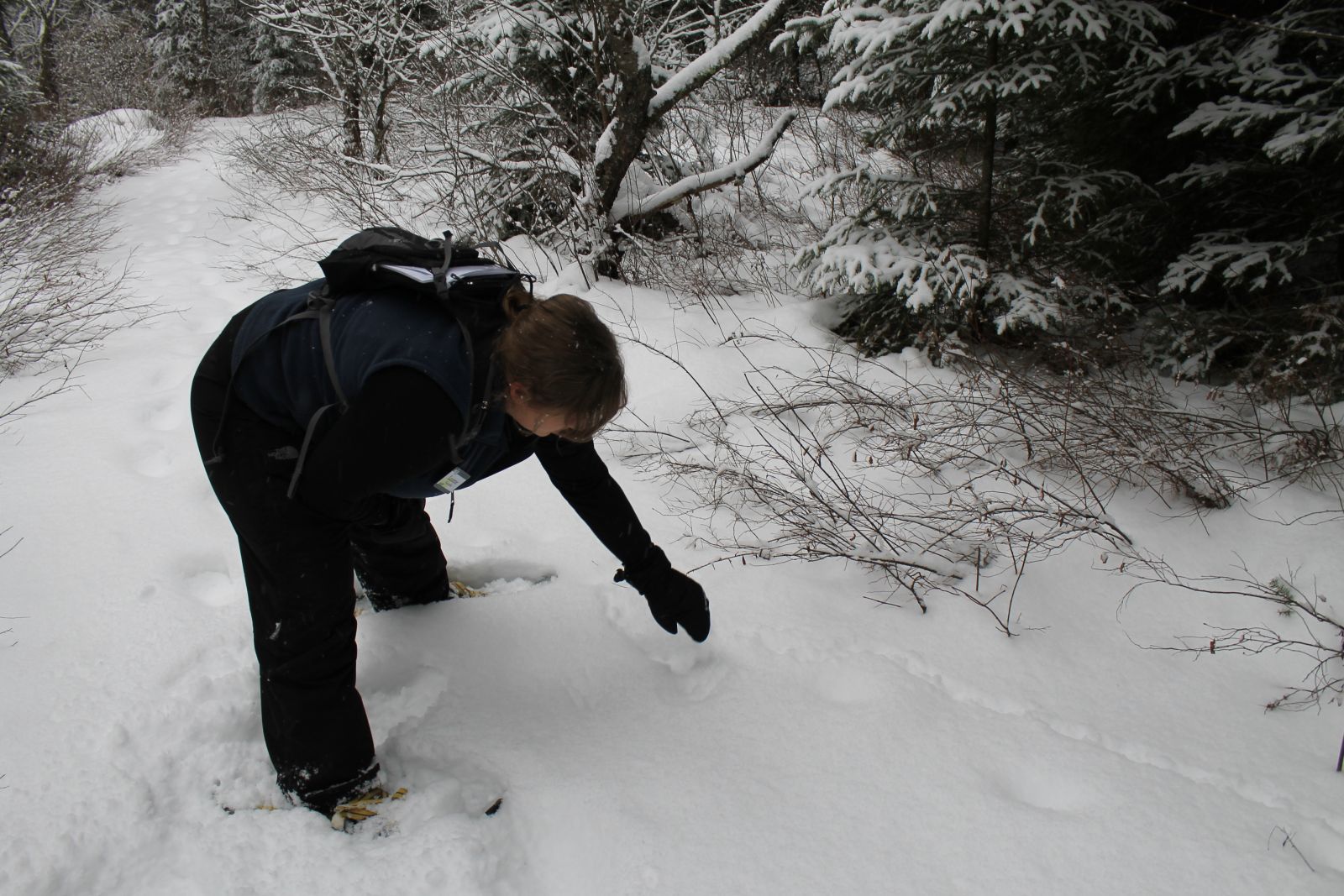 Can you see it?
Can you see it? 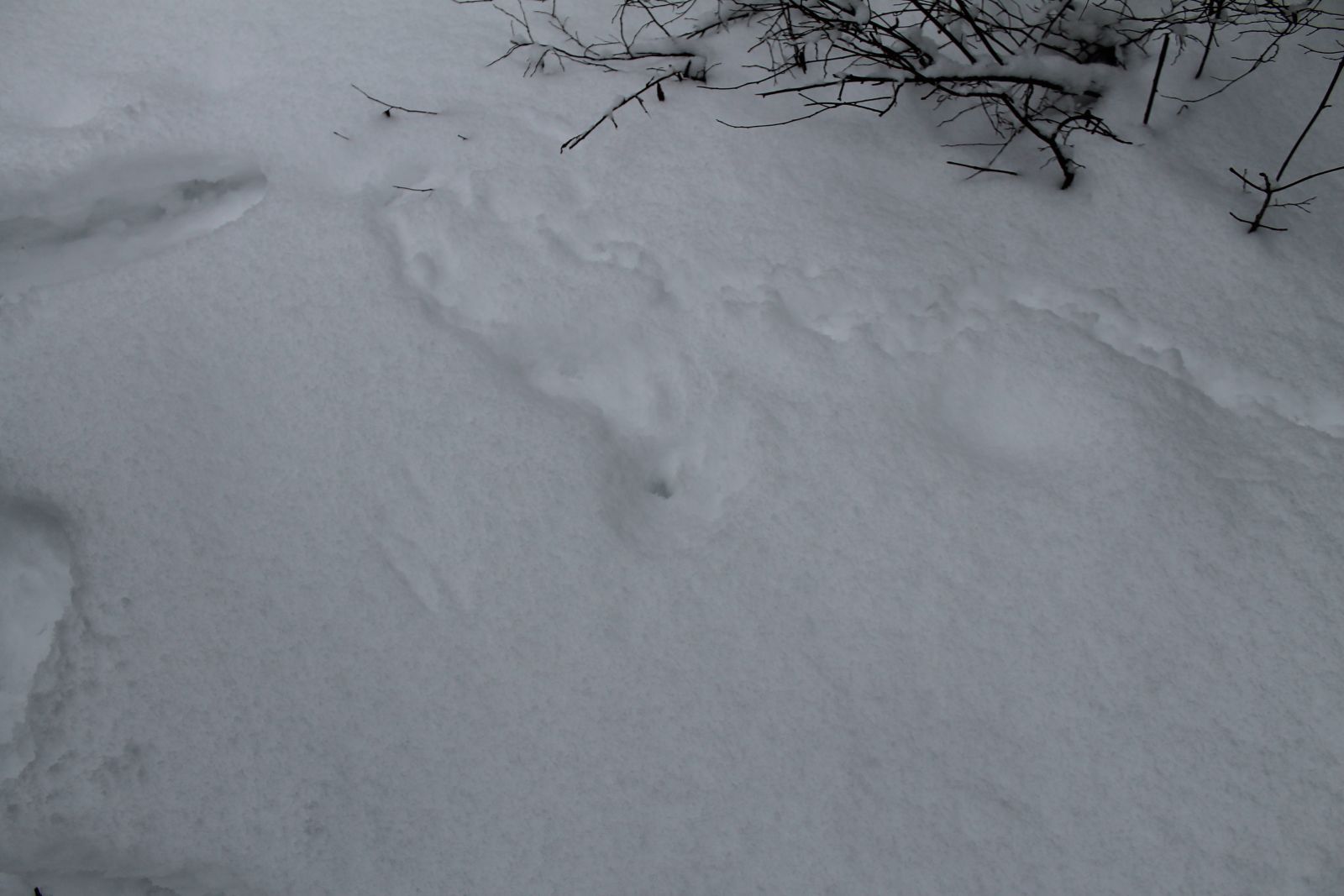
We continued to walk the trails for a bit as I got used to the feeling of snowshoes on my feet. It was cool to hear all the interesting facts Leanne knew about snow, and the animals living in and moving about through it.
But before long, I was ready to head out and try out a mountain rather than flatter trails. So I put my borrowed snowshoes back, thanked Leanne, and headed out.
Snowshoeing the mountain
I decided to take it easy on myself since it was my first time snowshoeing a mountain. I chose to tackle Coney Mountain, one of my old favorites because it's short yet has a wonderful view from the top.
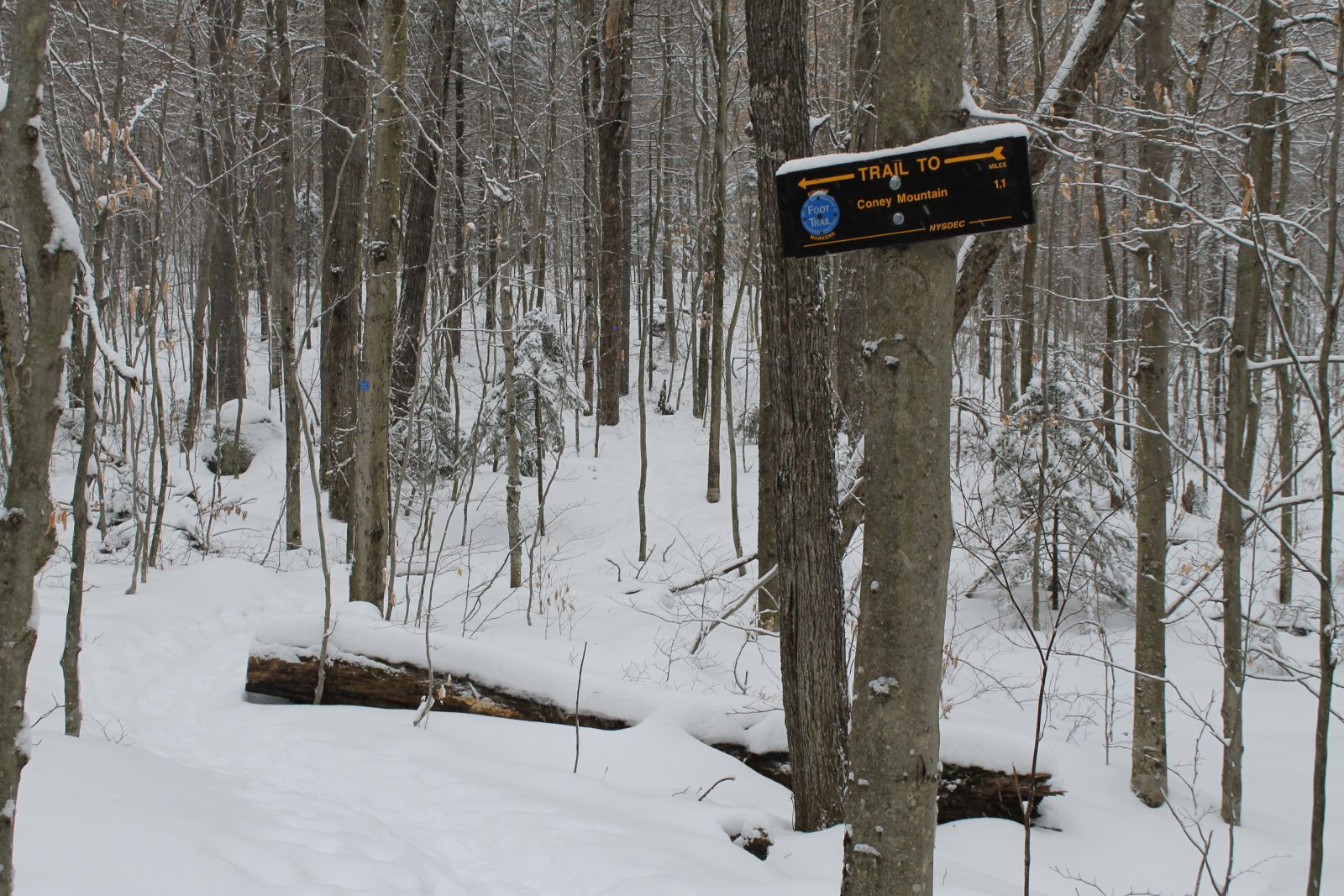
Before I headed out, I made sure to check what I needed to bring on a winter hike. I already knew that it’s never smart to wear cotton in the cold, since it absorbs moisture, and that it’s good to dress in a lot of layers. It starts out cold but you will likely warm up before long, then it gets cold again at higher elevations. You’ll want to be able to shed or add layers appropriately. So it’s best to start with a thin base layer, a thicker shirt over that, then something wind and waterproof over that. I dressed accordingly and grabbed my boyfriend's snowshoes, which fit OK. Make sure to check the weight range and size of a pair of snowshoes before using them.
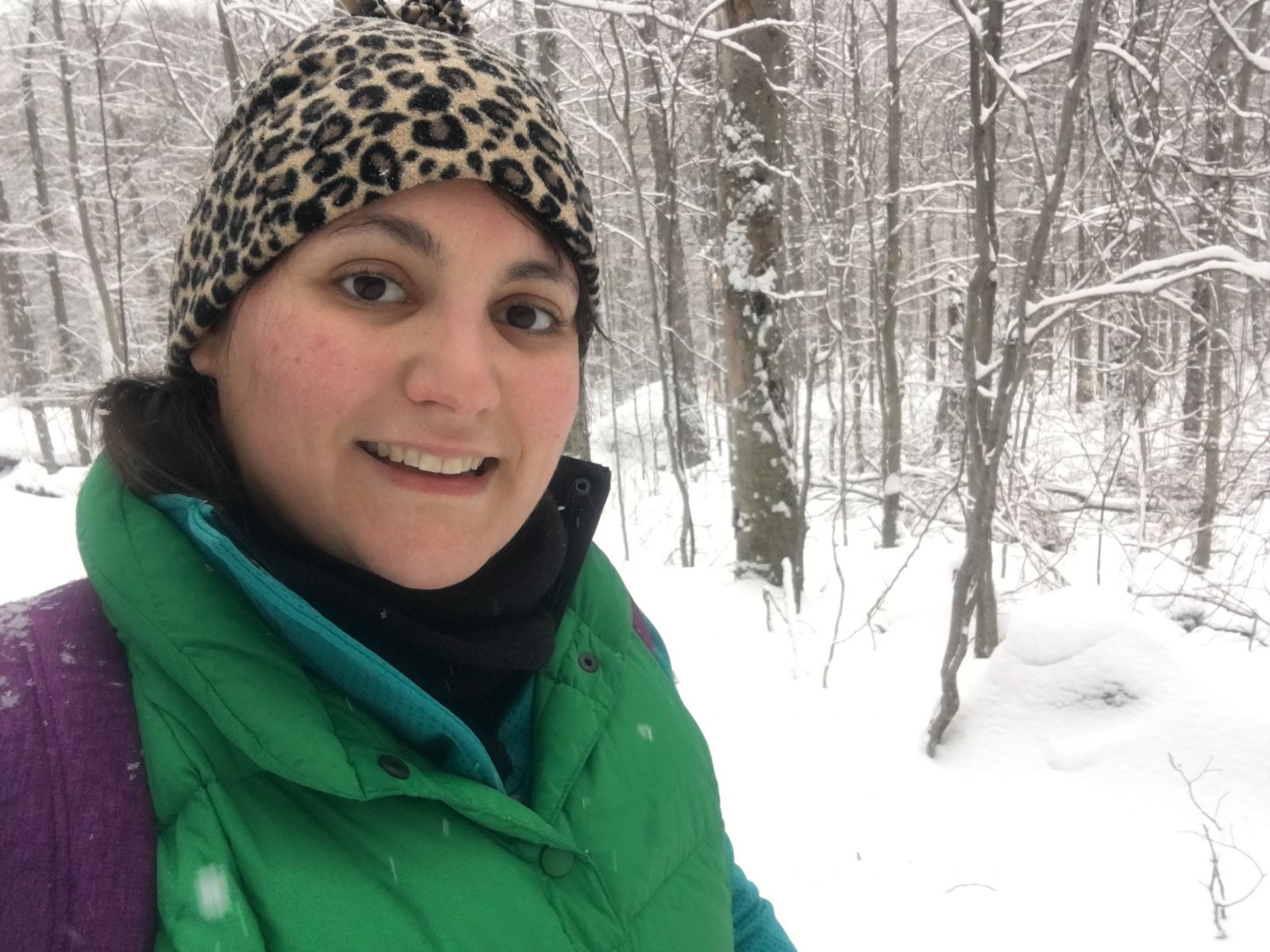
My friend Shaun suggested that I make sure to bring a few things: an extra dry shirt, an extra pair of dry wool socks, extra food like a thermos of warm soup, plenty of water, a first aid kit, a few of those little handwarmer packets, and a headlamp, regardless of how early I left, since it gets dark super quickly this time of year.
So I threw all that in my backpack and drove to the trailhead.
Whenever you go hiking, but especially in winter, make sure you sign your name in the register at the trailhead. As I signed in, I noticed a note at the top of the page in the register that someone had asked for people climbing the mountain to use snowshoes to help keep the trail groomed.
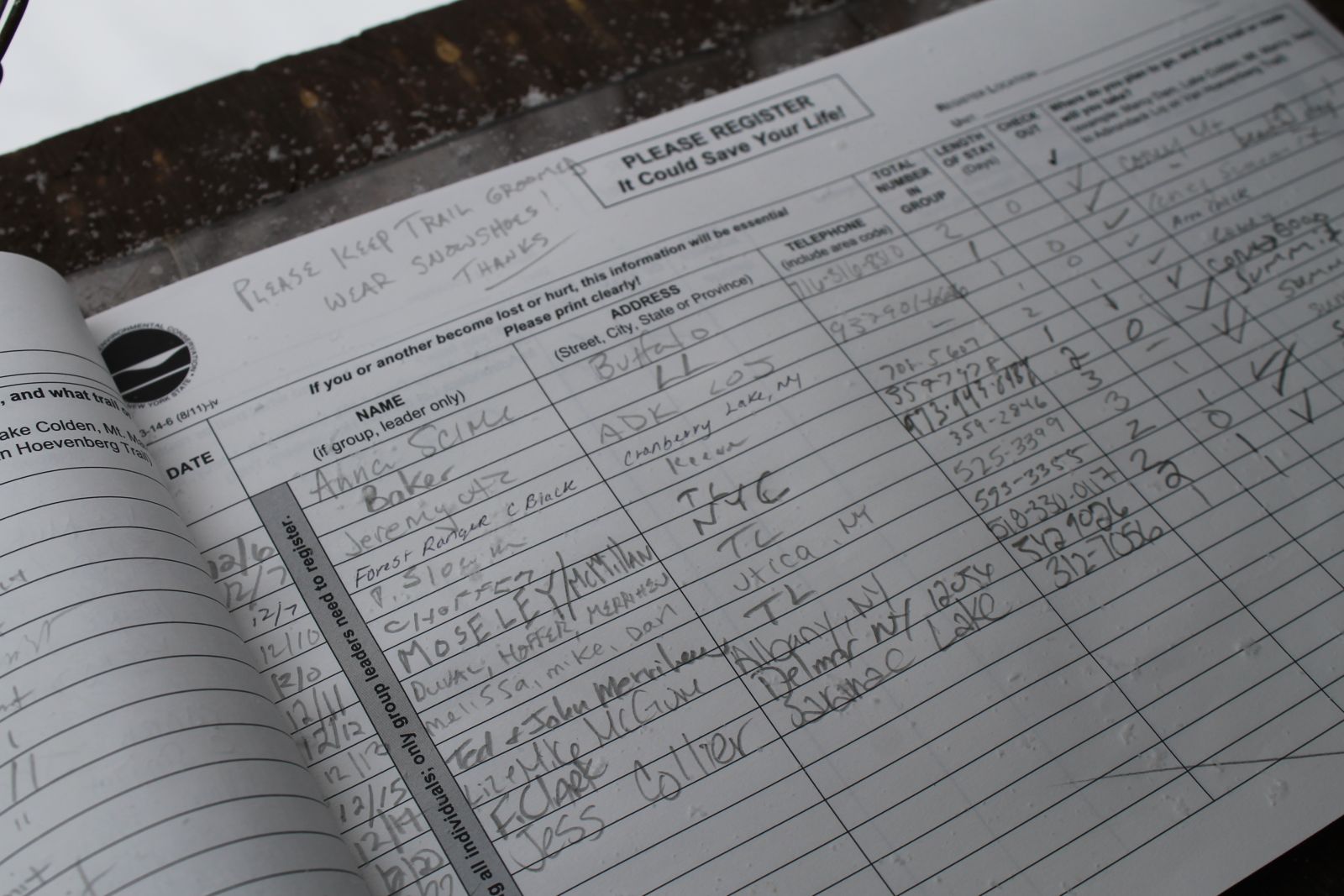
As I stepped onto the trail, it appeared that there was a reason for the note. It appeared that I was the only one in a while to use snowshoes on the trail.
The beginning of the trip was what I was used to: a wide-open trail that stayed relatively level and was easy enough to snowshoe on. But before long, the trail started to incline significantly. I found it a little tough to get the right stride going, as it seemed more natural for me to take small steps, but the snowshoes suggested I take longer steps. I soon found a comfortable pace and realized it wasn't terribly different from walking on flat ground.
It was a cloudy day, but the snow fell softly all around me. The woods were silent and the snow blanketed everything, making me feel like I was walking on a cloud.
I was glad the snowshoes widened my base, because the snow covered up quite a few knots and rocks that I likely would have tripped over in just boots. Each time I faltered, the snowshoes gave me stability and I was able to steady myself.
A few times, the trail was narrowed by rocks so I couldn't step with my snowshoes side by side.
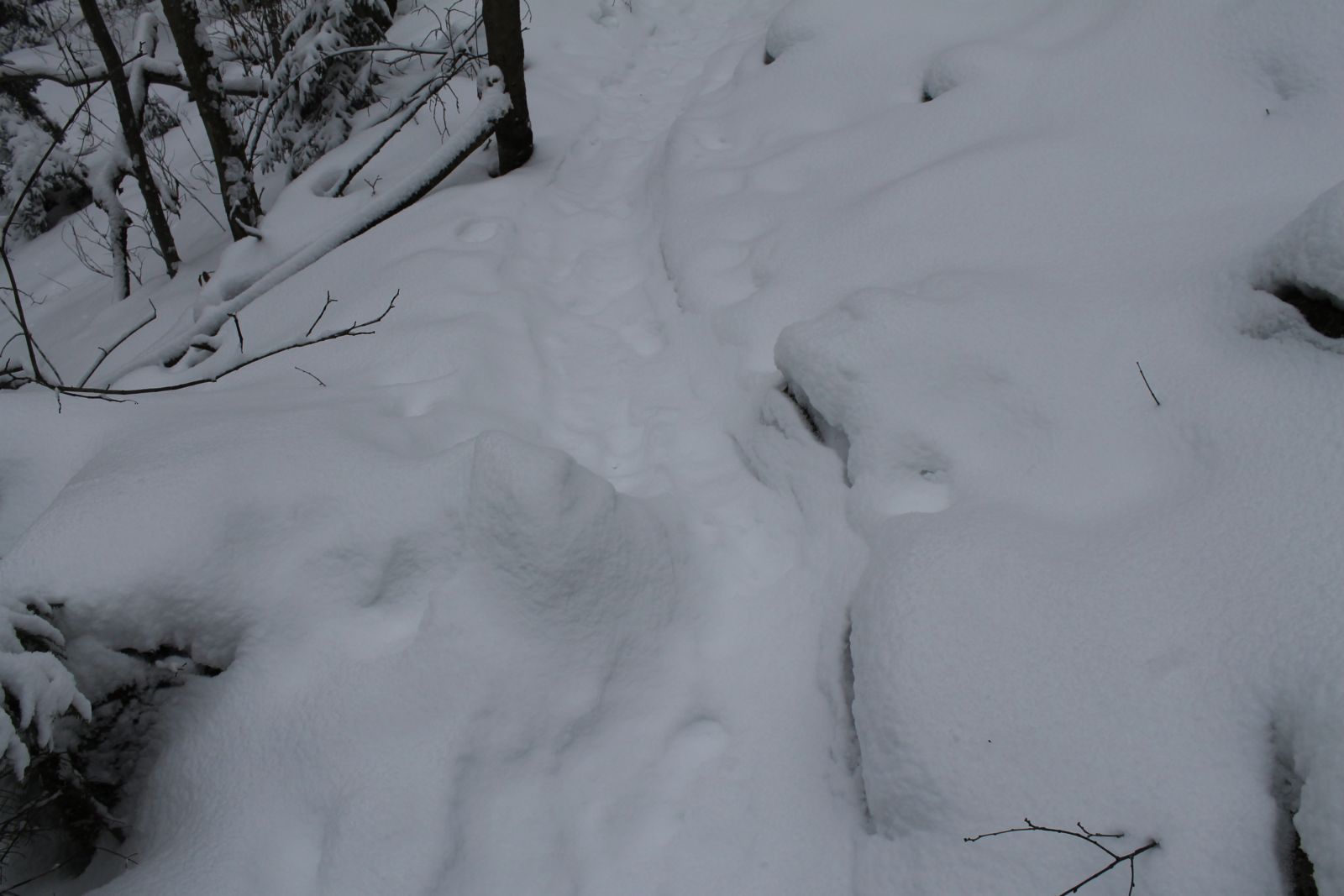 I couldn't decide if putting one snowshoe down and trying to sort of hop over the obstacle with the other one was better, or if it made more sense to try to climb up and over the rock or root that was narrowing the trail. I tried it both ways a few times, and I guess I'll have to keep practicing to get a little more graceful with both.
I couldn't decide if putting one snowshoe down and trying to sort of hop over the obstacle with the other one was better, or if it made more sense to try to climb up and over the rock or root that was narrowing the trail. I tried it both ways a few times, and I guess I'll have to keep practicing to get a little more graceful with both.
It definitely took a lot longer to snowshoe through the snow, along with stops to shed layers here and there, than it would have in the summer. I actually had to turn around just before getting to the top, because I had an appointment and didn't have enough time to get there!
I had a really great time being out in the silent woods watching the snow fall lightly all around me. But I guess that even though I was able to cross climbing a mountain in snowshoes off my bucket list, now I'll have to add summitting a mountain in snowshoes to it!
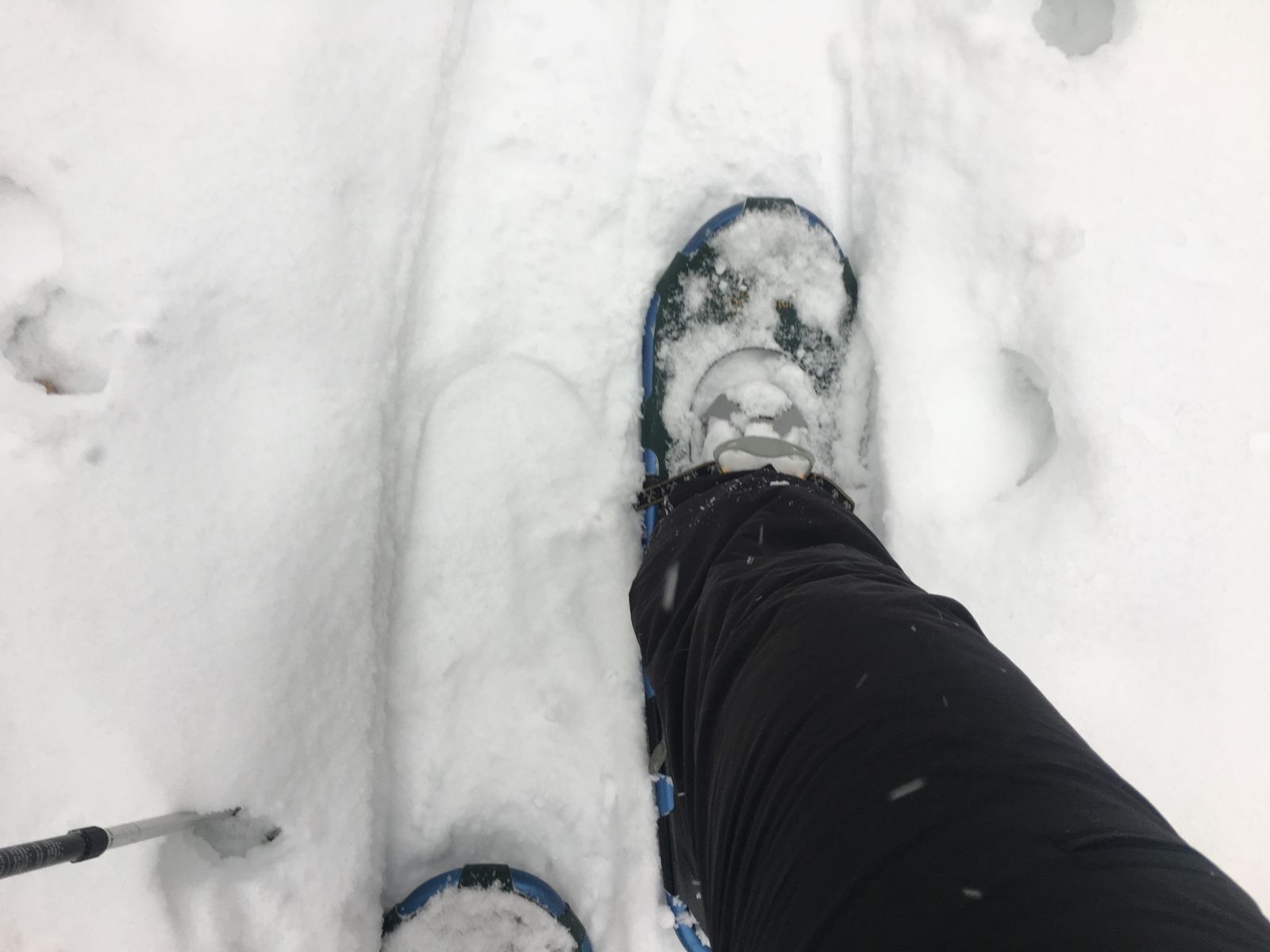
Nothing is better than a local craft beer and a warm meal after a day spent snowshoeing. Luckily, Tupper Lake has plenty of both to choose from!
